目录
💥1 概述
数据分析研究目前仍是行业热点,相关学者从数据分析关键技术中的异常检测、入侵检测、时间序列预测等角度展开研究。然而,现有研究在时间序列预测方面存在诸多局限性,没有考虑到复杂且规模庞大数据的计算消耗,忽视了非平稳数据的时间协变量漂移问题,缺乏一个实时、精准且泛化性能强的预测模型。
本文研究了使用不同的人工神经网络(即LSTM和GRU)对随机时间模型进行时间序列预测和预测的紧密程度。给定数据集包括辐照数据集和发电数据集,其基本上分别包含由传感器检测到的辐照度值和以(kw/h)为单位的发电值。
这些数据集包含从2018年12月到2019年11月的所有12个月的数据,每15分钟记录一次数据。
该项目的主要目标是找出最适合预测未来两天发电数据的ANN架构,从任何给定的一天开始,间隔为15、30、45、60分钟。
整个项目是通过matlab编程实现的。
📚2 运行结果
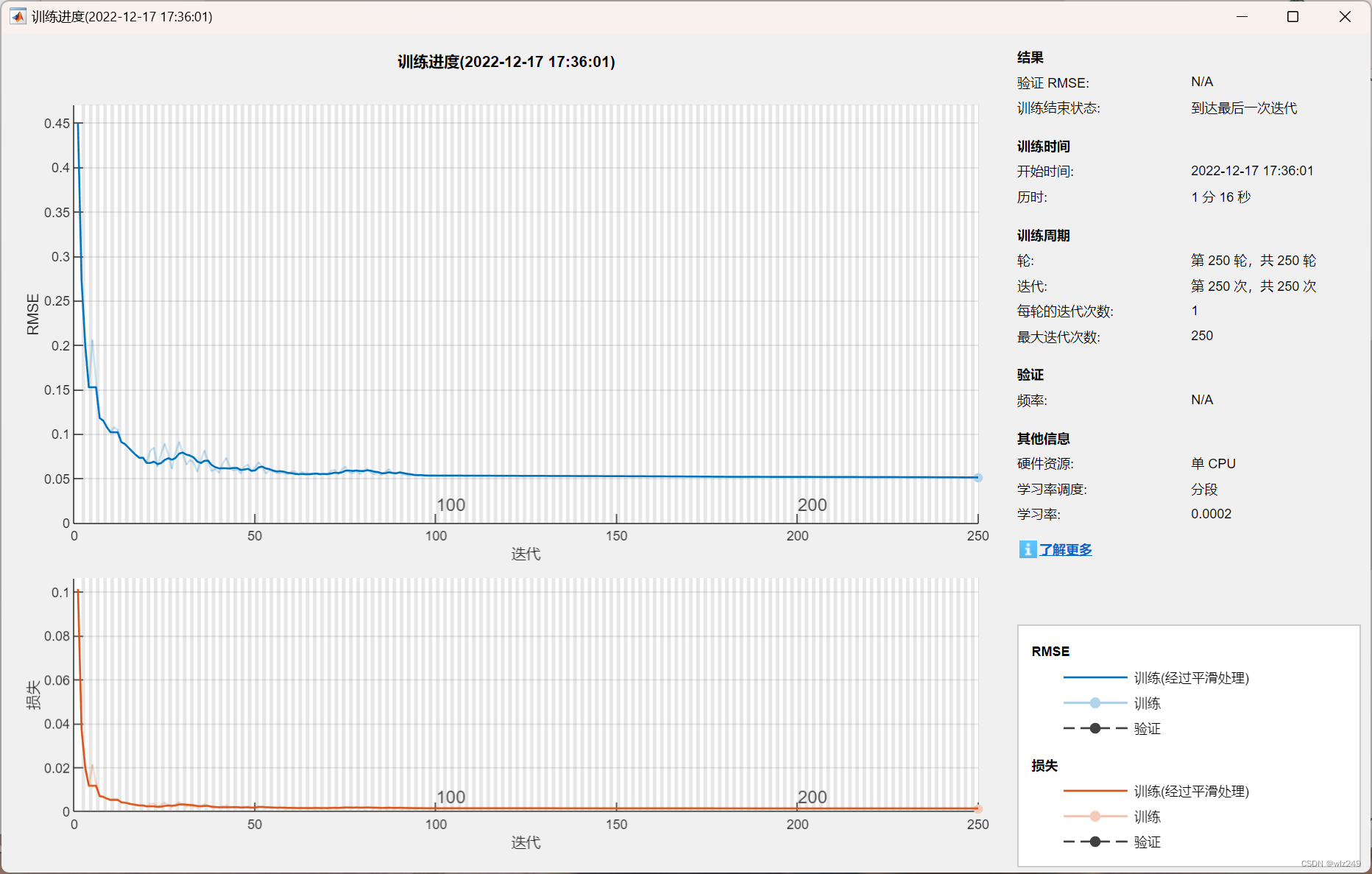
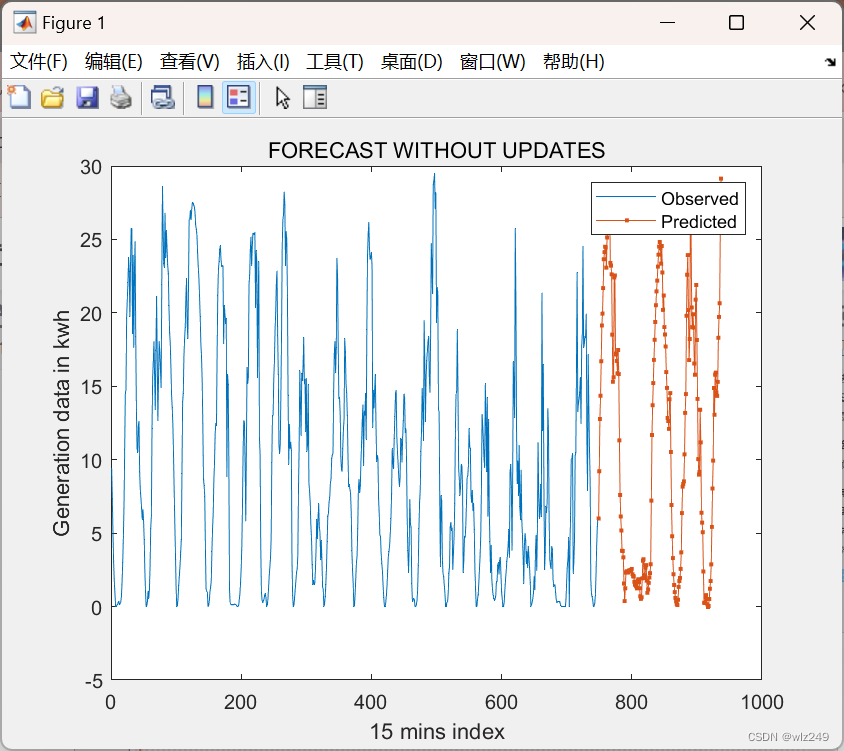
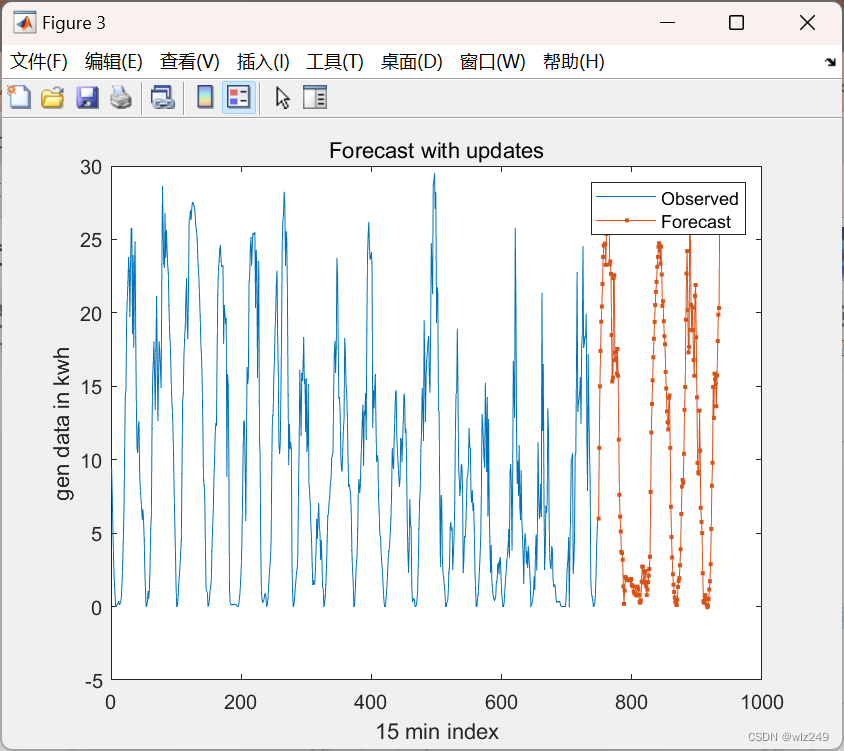
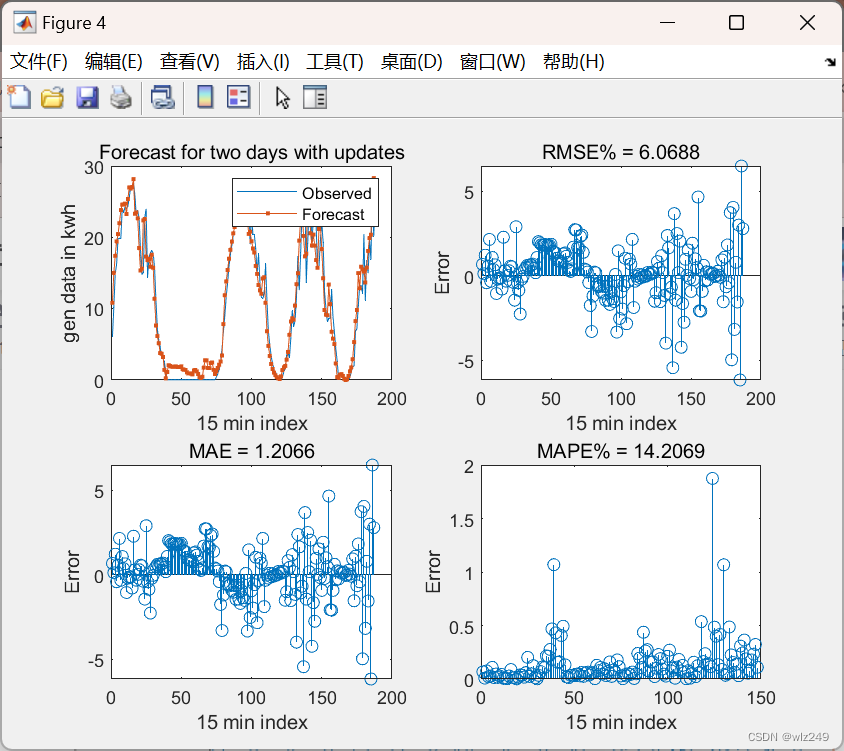
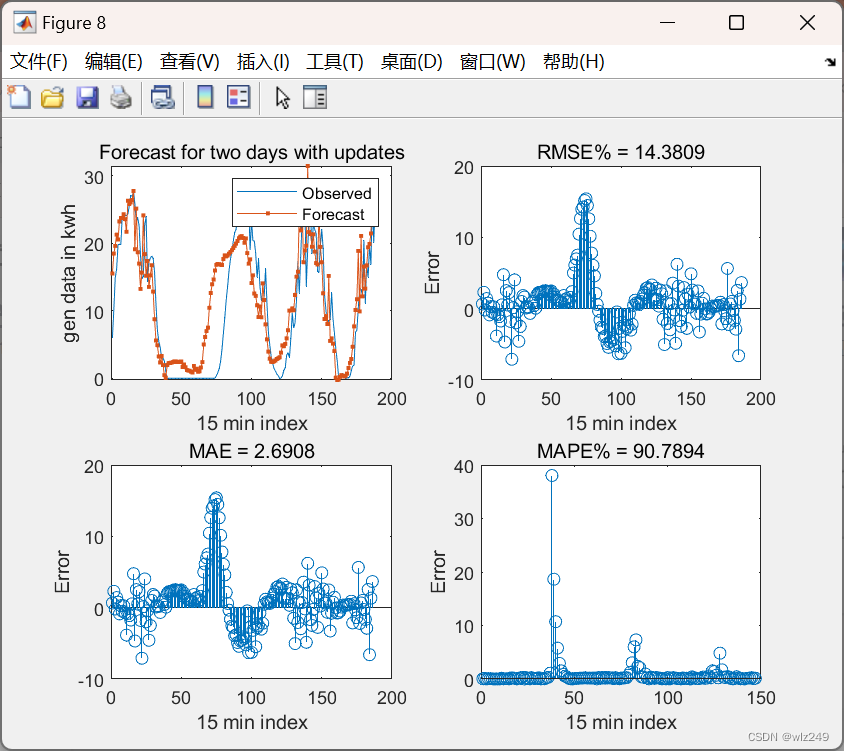
🎉3 参考文献
[1]王素. 基于深度学习的时间序列预测算法研究与应用[D].电子科技大学,2022.DOI:10.27005/d.cnki.gdzku.2022.003088.
👨💻4 Matlab代码
主函数部分代码:
load Generation_data.mat; % load data from hard drive to workspace
IrradiationData=readtable('Irradiation data.xlsx');
TrainIp=table2array(IrradiationData(1028:2927,4)); % read data from workspace
TestIp=table2array(generationdata_table_dt(1005:2904,4));
TestIp(isnan(TrainIp)) = []; % remove NAN from DATA
TrainIp(isnan(TrainIp)) = []; % remove NAN from DATA
TrainIp(TestIp>50)=[]; % remove noise (more than 50) from DATA
TestIp(TestIp>50)=[]; % remove noise (more than 50) from DATA
TrainIp(TestIp<0)=[]; % remove noise (less than 0) from DATA
TestIp(TestIp<0)=[]; % remove noise (less than 0) from DATA
TestIp(TrainIp<=0)=[]; % remove noise (less than 0) from DATA
TrainIp(TrainIp<=0)=[]; % remove noise (less than 0) from DATA
TrainIp=TrainIp'; % convert row vs column
TestIp=TestIp';
mn = min(TrainIp); % minimum of data
mx = max(TrainIp); % maximum of data
mn2 = min(TestIp); % minimum of data
mx2 = max(TestIp); % maximum of data
input = (TrainIp - mn) / (mx-mn); %Normlize the Data
target = (TestIp - mn2) / (mx2-mn2);
numTimeStepsTrain = floor(0.8*numel(TrainIp)); % 80 and 20 percent training and testing points
figure
plot(input(1:50))
hold on
plot(target(1:50),'.-')
legend(["Training" "Testing"])
xlabel("Time")
ylabel("kWh")
title(" Unit Generation")
close Figure 1;
XTrainIp = input(1:numTimeStepsTrain+1); % training input data points
XTestIp = target(1:numTimeStepsTrain+1); % training target data points
YTrainIp = input(numTimeStepsTrain+1:end); % testing input data points
YTestIp = target(numTimeStepsTrain+1:end);
numFeatures = 2; % number of inputs=2
numResponses = 1; % number of output=1
numHiddenUnits = 200; % number of hidden unites
rmsepred=[];
rmseupdat=[];
maepred=[];
maeupdat=[];
mapepred=[];
mapeupdat=[];
layers = [ ...
sequenceInputLayer(numFeatures)
lstmLayer(numHiddenUnits)
fullyConnectedLayer(numResponses)
regressionLayer];
options = trainingOptions('adam', ...
'MaxEpochs',250, ...
'GradientThreshold',1, ...
'InitialLearnRate',0.005, ...
'MiniBatchSize',50, ...
'LearnRateSchedule','piecewise', ...
'LearnRateDropPeriod',90, ...
'LearnRateDropFactor',0.2, ...
'Verbose',false, ...
'Plots','training-progress'); % LSTM other options
% 'ValidationData',{XTestIp,YTestIp},...
% 'ValidationFrequency',30, ...






















 3万+
3万+











 被折叠的 条评论
为什么被折叠?
被折叠的 条评论
为什么被折叠?








